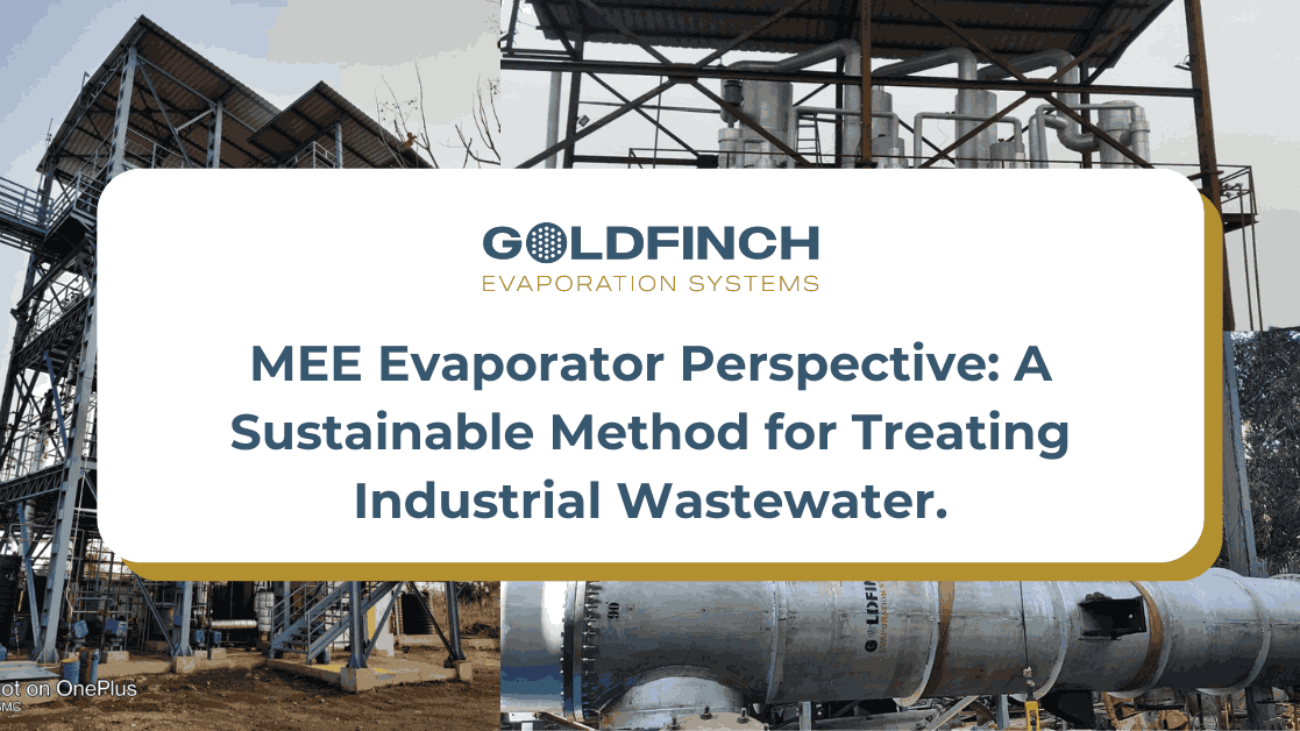Industrial Wastewater Treatment-A Complete Review
A tremendous amount of water is wasted in industrial processes, and the waste may be contaminated with dangerous pollutants. Thus, it is of the utmost importance that these waters are treated to protect the environment, meet certain legal regulations, and conserve resources. Treating water through conventional systems may not always provide the best or even sustainable treatment, thus attracting industries to seek advanced technology like MEE Evaporator systems, which offer efficient and eco-friendly solutions for wastewater treatment.
Need for Sustainable Solutions
Environmental pressures and regulations have pushed industries to manage their wastewater operations with greener and more efficient methods. Sustainable solutions will enable compliance with environmental regulations, minimize operational costs, and save scarce resources. Multiple-effect evaporation (MEE) is an advanced solution currently gaining widespread acceptance.
How MEE Evaporator Works
The MEE Evaporator works on the basic principle of evaporation, which separates water from contaminants in industrial wastewater.
This is how it works, stepwise:
- Evaporation Process: In the evaporator, wastewater is fed, wherein heat is supplied to evaporate away the water.
- Multiple Effect Stages: In the first stage, vapors developed are heated in turn for heating the next stage, thus conserving energy in a good amount.
- Condensation: This vapor is condensed back into water, free from contamination.
- Concentration of Waste: The concentrated waste left can then be properly disposed of or subjected to further processing for resource recovery.
This multi-effect operation makes the utmost of every previous phase’s latent heat, therefore making it economically attractive and energy efficient.
Advantages of MEE Evaporator in Wastewater Treatment
- Resource Conservation: By recovering clean water from wastewater, industries can help conserve freshwater.
- Energy Efficiency: The multi-effect design minimizes energy requirements by reusing heat across multiple stages.
- Environmental Compliance: The system guarantees that the treated exfiltration meets the environmental regulations.
- Waste Minimization: This makes the concentrated waste easier for management, storage, and disposal, causing minimal adverse effects on the environment.
- Modular Design: The MEE system can be adjusted according to various industry-specific needs.
Case Studies Showcasing the Effectiveness of MEE Evaporator
- Chemical Industry: A leading chemical manufacturer implemented an MEE evaporator to treat high-salinity wastewater. ACHIEVEMENT OF 70% REDUCTION OF FRESHWATER CONSUMPTION AND ADHERENCE TO ENVIRONMENTAL DISCHARGED REGULATIONS.
- Pharma Industry: In a hazardous waste management project, a pharmaceutical client applied Multi-Effect Evaporation to recover clean water and concentrate hazardous waste for safe disposal.
- Food and Beverage Industry: MEE evaporators were used by a dairy processing plant to treat process water, enabling the plant to save a lot of money while improving its environmental performance.
Factors to Consider When Implementing MEE Evaporator
- Wastewater Characteristics: Analyze the composition of wastewater to determine the suitability of MEE technology.
- System Design: Choose the appropriate configuration and capacity based on the industry’s specific requirements.
- Energy Source: Evaluate energy availability and efficiency to optimize operating costs.
- Regulatory Compliance: Within the confines of Local Laws and International Standards regarding environmental protection, compliance is mandatory for any applications considered.
- Maintenance Activities: Planning needs to be done for the regular maintenance of MEE Evaporators to ensure their effective operation and long-term reliability
Maintenance and Troubleshooting of MEE Evaporator.
- Periodic Cleaning: Regular cleaning prevents fouling and scaling of the heat exchangers and pipelines.
- Monitoring: Systems for continuous monitoring shall be implemented and installed to keep the systems in good condition and detect possible flaws.
- Component Inspection: Critical components, for instance, pumps and valve seals, should be inspected for signs of wear and tear.
- Troubleshooting: Whenever problems arise, say uneven heat distribution, bad scaling, or vapor leaks, prompt action should be undertaken.
Comparing MEE Evaporator with Other Wastewater Treatment Methods
| Parameter | MEE Evaporator | Reverse Osmosis (RO) | Activated Sludge Process |
| Energy Efficiency | High | Moderate | Low |
| Waste Concentration | High | Moderate | Low |
| Water Recovery | High | High | Moderate |
| Maintenance | Moderate | High | Low |
| Environmental Impact | Low | Moderate | High |
Conclusion:
Embracing MEE Evaporator for a Greener Tomorrow The MEE Evaporator finds its significance in industrial wastewater treatment due to its sustainable and efficient profile. It saves resources, prevents waste, and keeps systems in line with regulations, thus being a blessing for any company wanting to restore Mother Earth. By deploying this technology, companies will fulfill their environmental responsibilities and gain a competitive edge in the eco-friendly market.
Goldfinch is at the forefront of zero discharge systems in India and is proud to offer innovative evaporator solutions addressing the special needs of diverse industries. The latest MEE evaporator systems from Goldfinch ensure sustainable and efficient wastewater treatment, allowing industries to forge a path toward a cleaner and greener tomorrow.


